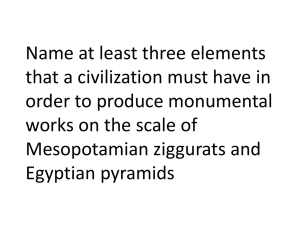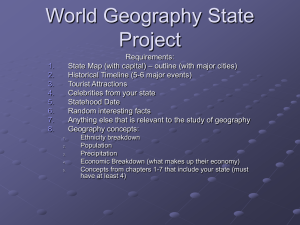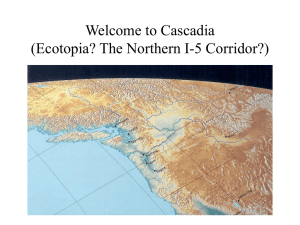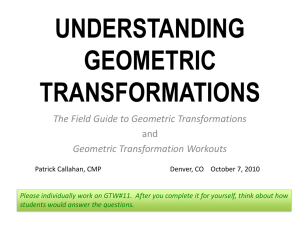Period One overview - Squalicum High School
advertisement
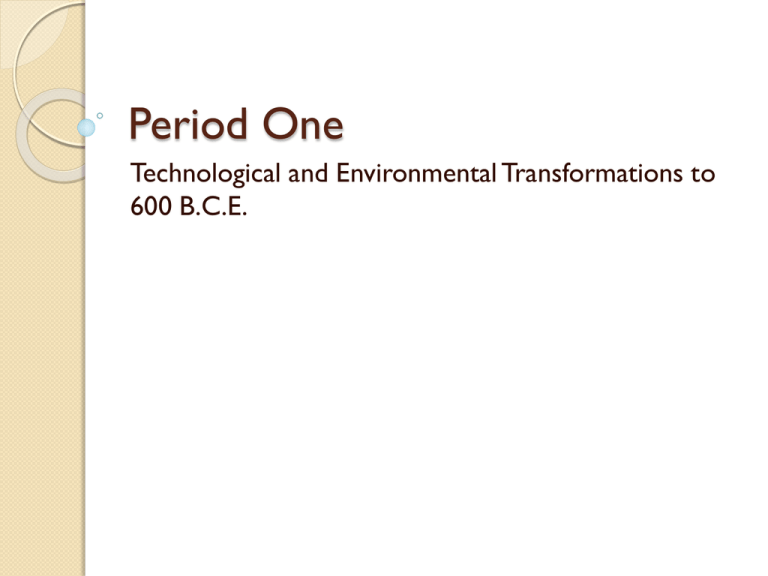
Period One Technological and Environmental Transformations to 600 B.C.E. Types of Maps to use Key Concepts Big Geography and the peopling of the Earth (1.1) Interactive map of Genographic project https://genographic.nationalge ographic.com/genographic/a tlas.html?era=e003 Geography and Period 1: Technological and Environmental Transformations to 600 CE Key Concepts 1.2. Location and reason for emergence of agriculture in various locations -> led to new economic and social systems -> agriculture and pastoralism were transformative -> technological innovations led to improvements (pottery, plows, woven textiles, metallurgy, wheels) Types of Maps to use Geography and Period 1: Technological and Environmental Transformations to 600 CE Key Concepts Types of Maps to use 1.3 I. Location of core and foundational civilizations (and early trade networks) Mesopotamia (trade with Indus Valley) Egypt (trade with Nubia) Mohenjo-Daro and Harappa Shang Olmecs Chavin Geography and Period 1: Technological and Environmental Transformations to 600 CE Key Concepts Illustrative examples of new weapons and new modes of transportation (choose one of each) 1.3 II. First states emerged, including early regions of state expansion or empire building like: Mesopotamia, Babylonia, and the Nile Valley. Hittites had an advantage due to access to iron. Geography and Period 1: Technological and Environmental Transformations to 600 BCE .Early civilizations developed monumental architecture and urban planning Illustrative examples of monumental architecture and urban planning (choose one – ziggurats, pyramids, temples, defensive walls, streets and roads, sewage and water systems) 1.3 III. Culture played a role in unification through laws, language, literature, religion, myths, and monumental art Key Concepts Illustrative examples of arts and artisanship (choose one—sculpture, painting, wall decorations, and elaborate weaving) Elites, both political and religious, promoted arts and artisanship. 1.3 III. Culture played a role in unification through laws, language, literature, religion, myths, and monumental art Key Concepts Illustrative example of record keeping(choose one: Cuneiform, hieroglyphics, pictographs, alphabets, or quipu) Systems of record-keeping arose independently in all early civilizations and then diffused. 1.3 III. Culture played a role in unification through laws, language, literature, religion, myths, and monumental art Unification through culture, continued 1.3 III. States developed legal codes including Code of Hammurabi. New religious beliefs emerged including:Vedic religion, Hebrew monotheism, and Zorastrianism Trade expanded from local to regional and transregional including trade between Egypt and Nubia and Mesopotamia and the Indus valley. Social and gender hierarchies grew more rigid with state expansion and urbanization. Geography and Period 1: Technological and Environmental Transformations to 600 BCE Key Concepts One Illustrative example of literature (choose one: Epic of Gilgamesh, Rig Veda, Book of the Dead) Literature was a reflection of culture. 1.3 III. Culture played a role in unification through laws, language, literature, religion, myths, and monumental art
